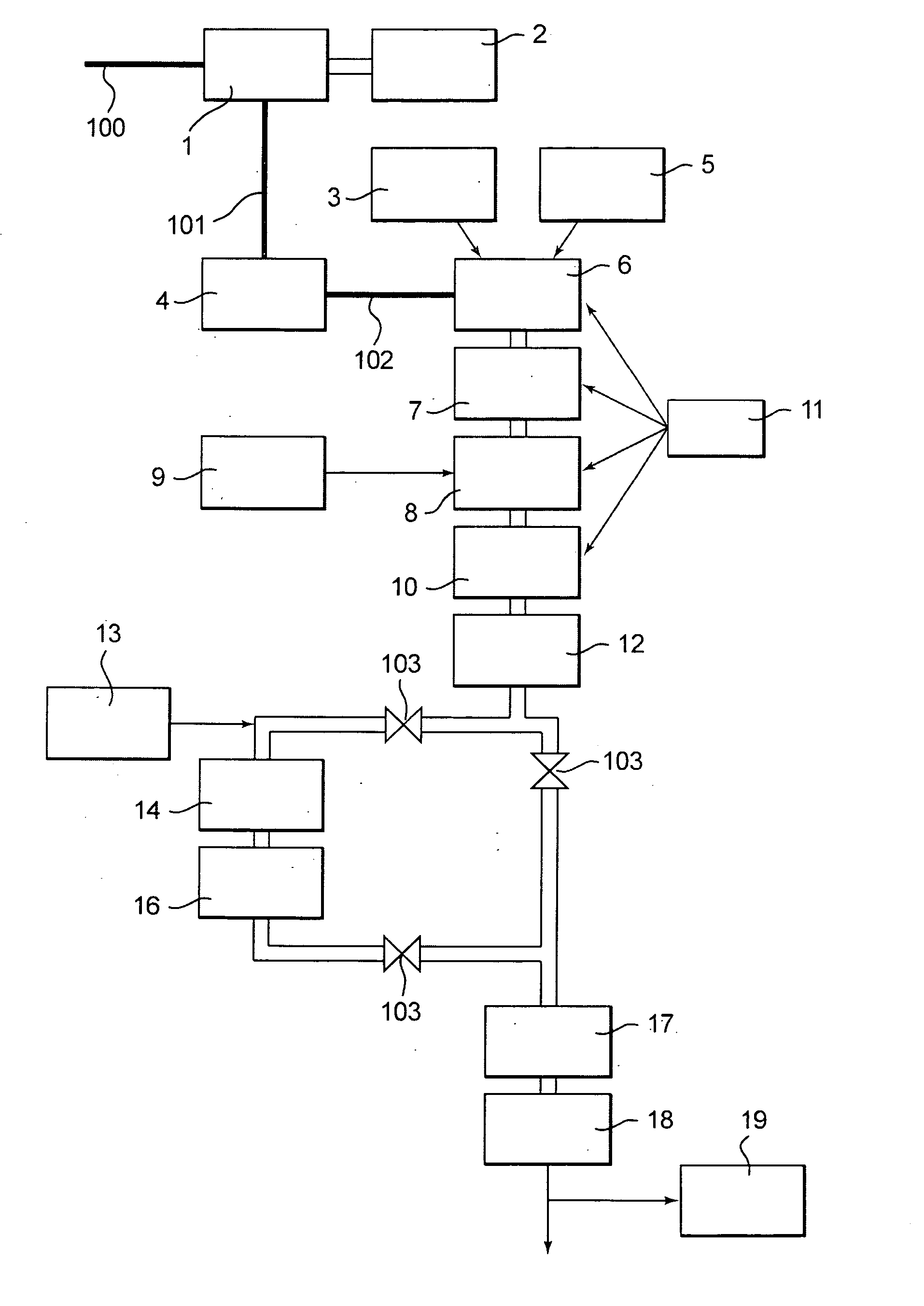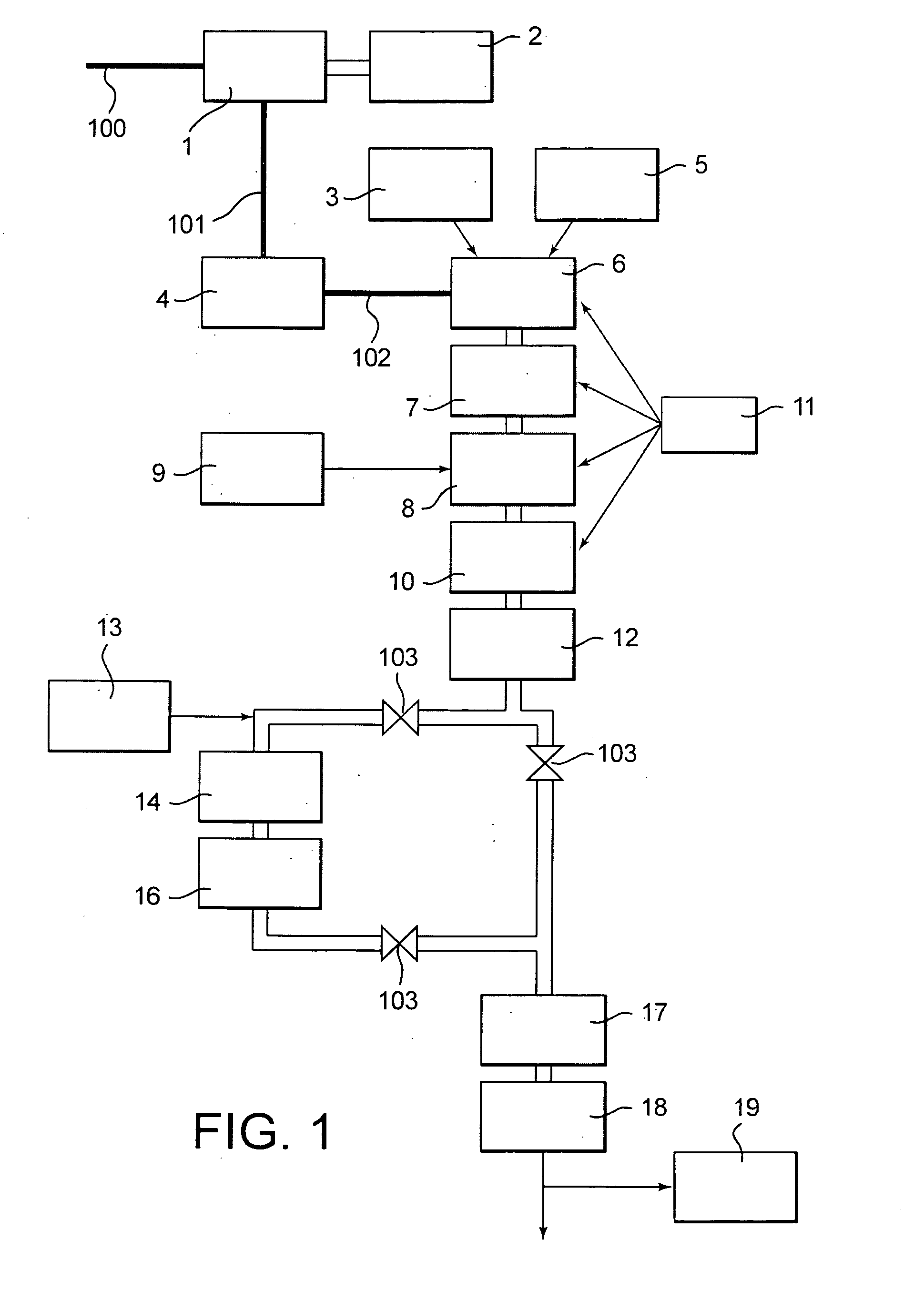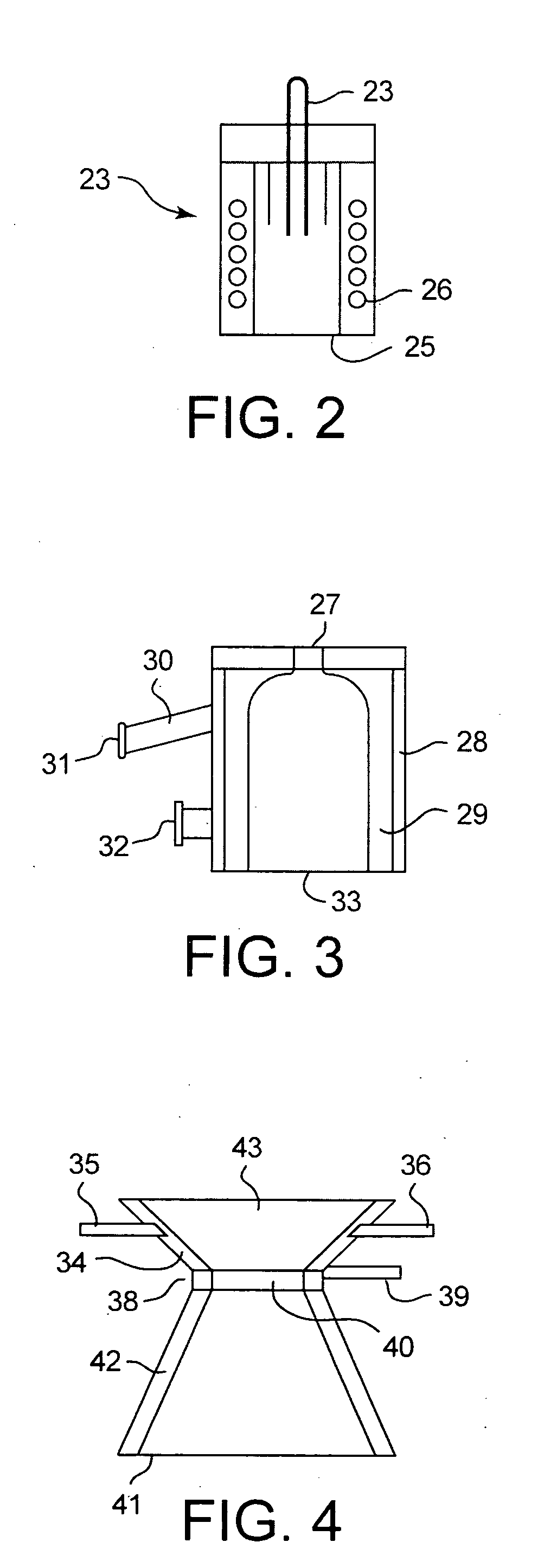Device and Method for Destroying Liquid, Powder or Gaseous Waste Using an Inductively Coupled Plasma
a technology of inductively coupled plasma and waste liquid, which is applied in indirect carbon-dioxide mitigation, combustion process, lighting and heating apparatus, etc., can solve the problems of waste disposal, crucial waste processing problem, and uncontrollable manner of waste disposal
- Summary
- Abstract
- Description
- Claims
- Application Information
AI Technical Summary
Benefits of technology
Problems solved by technology
Method used
Image
Examples
Embodiment Construction
[0074]The installation used for the thermal destruction process as described in the invention is described in FIG. 1.
[0075]An electrical generator 1 connected to a 380V / 50 Hz electricity supply system (reference 100) and cooled by a cooling plant 2, supplies a plasma torch 6 with a high frequency supply through a control panel 4. This control panel may be, for example, a tuning cabinet. Reference 101 represents the coaxial cable connecting the electrical generator 1 to the control panel 4, and reference 102 illustrates an induction arm connecting the panel 4 to the plasma torch 6.
[0076]The plasma torch 6 must be supplied with gas in order to operate. The introduction of these operating gases 3 as well as the introduction of the water / waste mixture to be processed 5 occurs directly inside the torch 6. The water and waste are mixed together beforehand, ant then the mixture is introduced into the torch 6 using a spray probe for liquids or suspensions and using an injection probe for ga...
PUM
| Property | Measurement | Unit |
|---|---|---|
| temperature | aaaaa | aaaaa |
| temperatures | aaaaa | aaaaa |
| temperatures | aaaaa | aaaaa |
Abstract
Description
Claims
Application Information
 Login to View More
Login to View More - R&D
- Intellectual Property
- Life Sciences
- Materials
- Tech Scout
- Unparalleled Data Quality
- Higher Quality Content
- 60% Fewer Hallucinations
Browse by: Latest US Patents, China's latest patents, Technical Efficacy Thesaurus, Application Domain, Technology Topic, Popular Technical Reports.
© 2025 PatSnap. All rights reserved.Legal|Privacy policy|Modern Slavery Act Transparency Statement|Sitemap|About US| Contact US: help@patsnap.com



